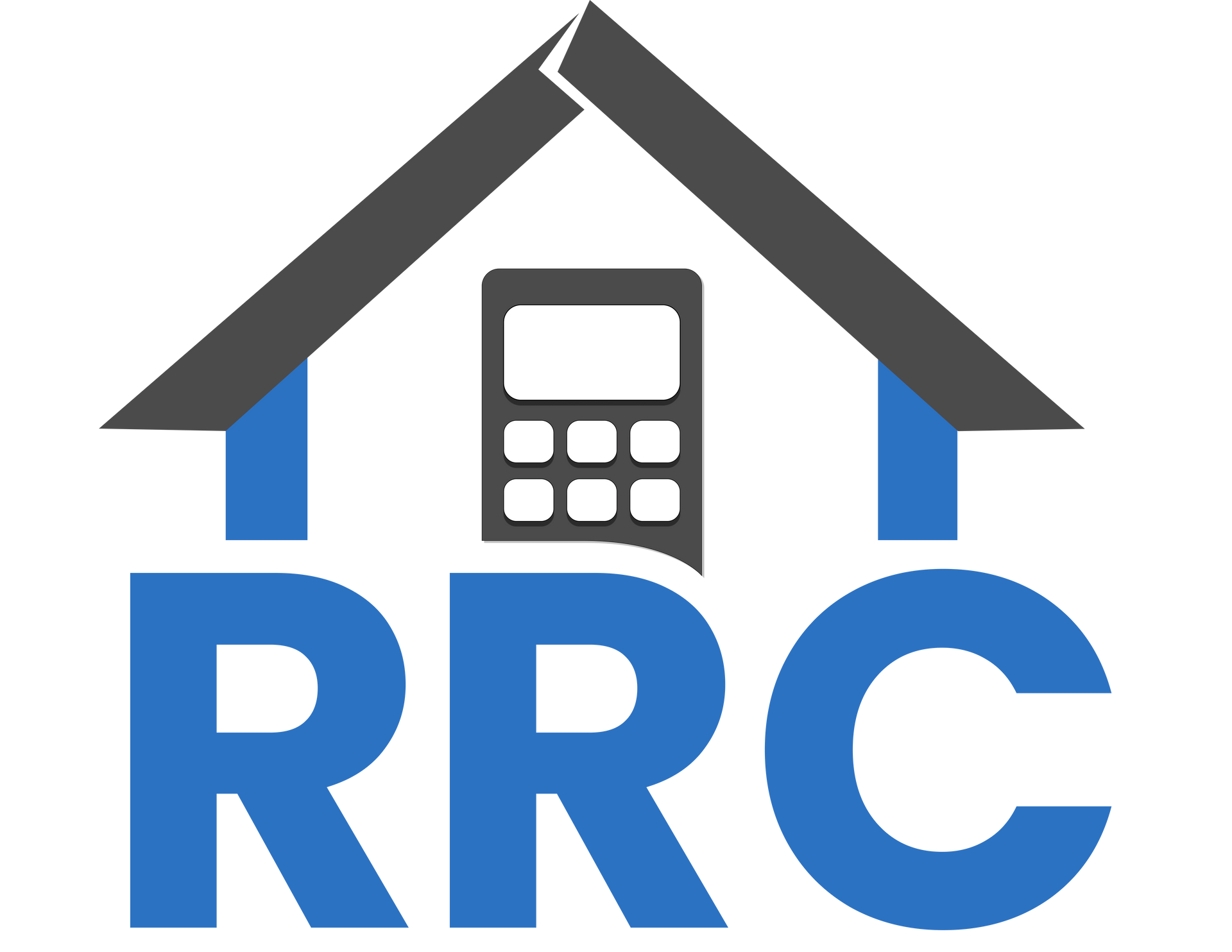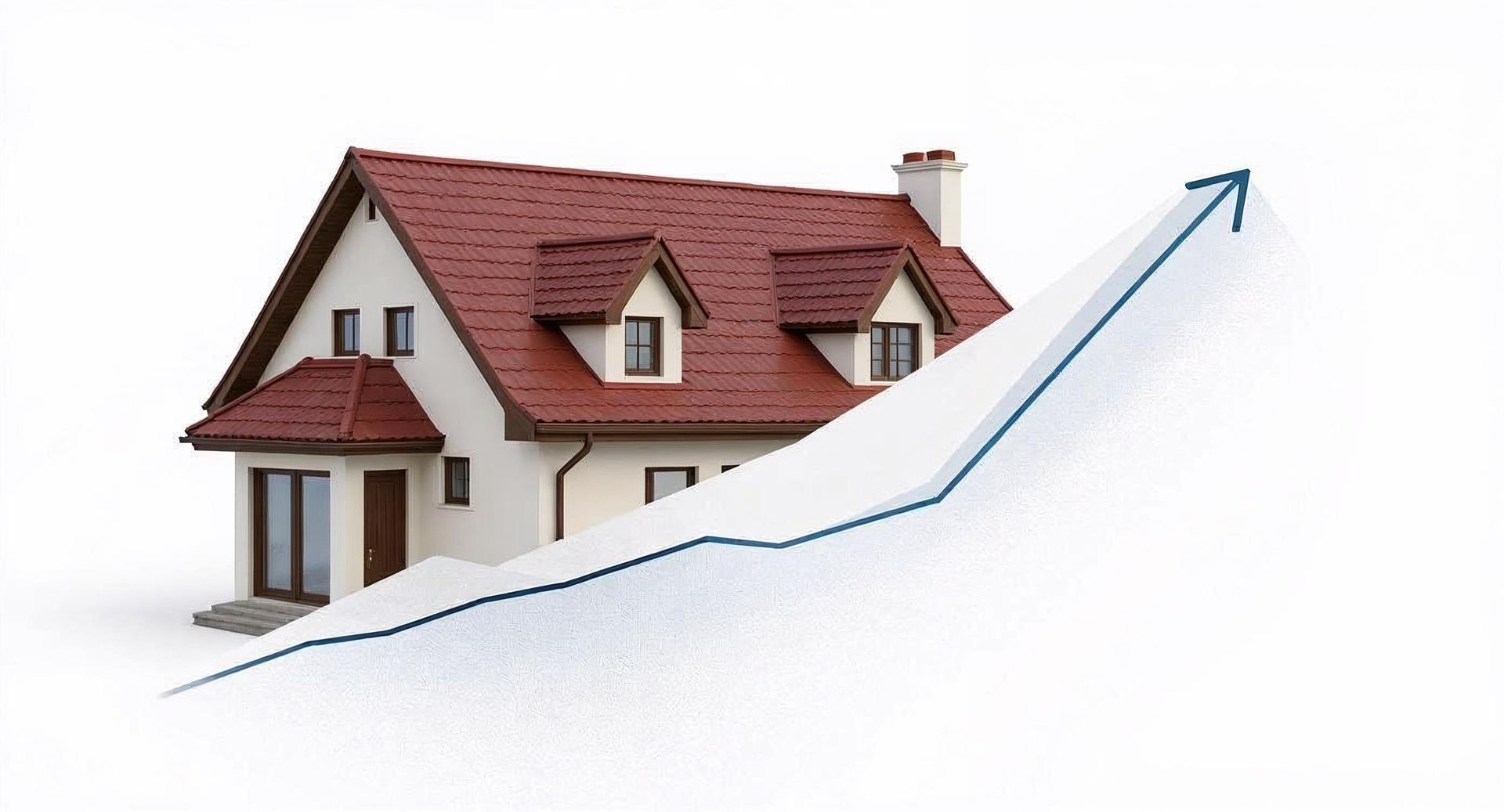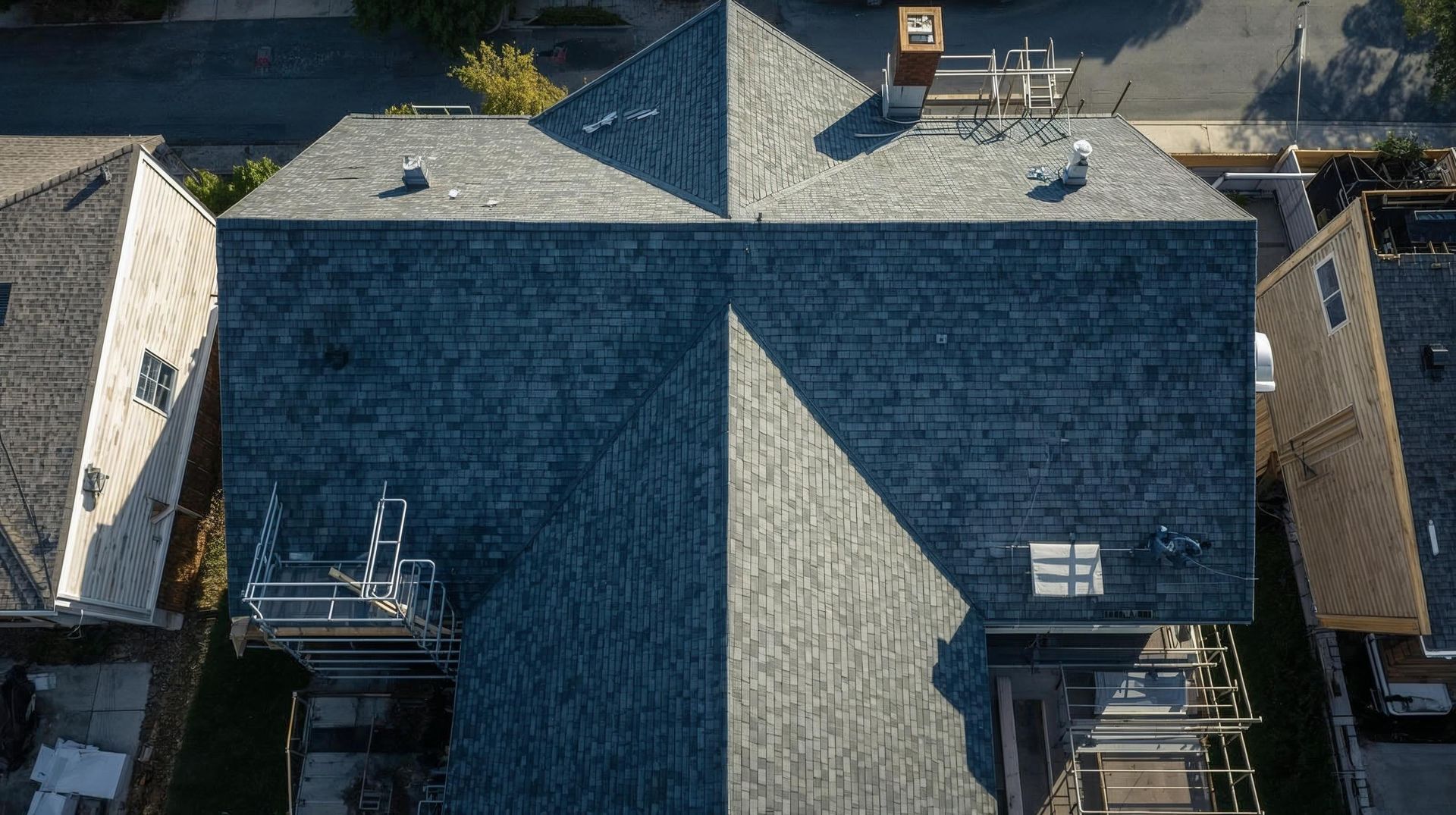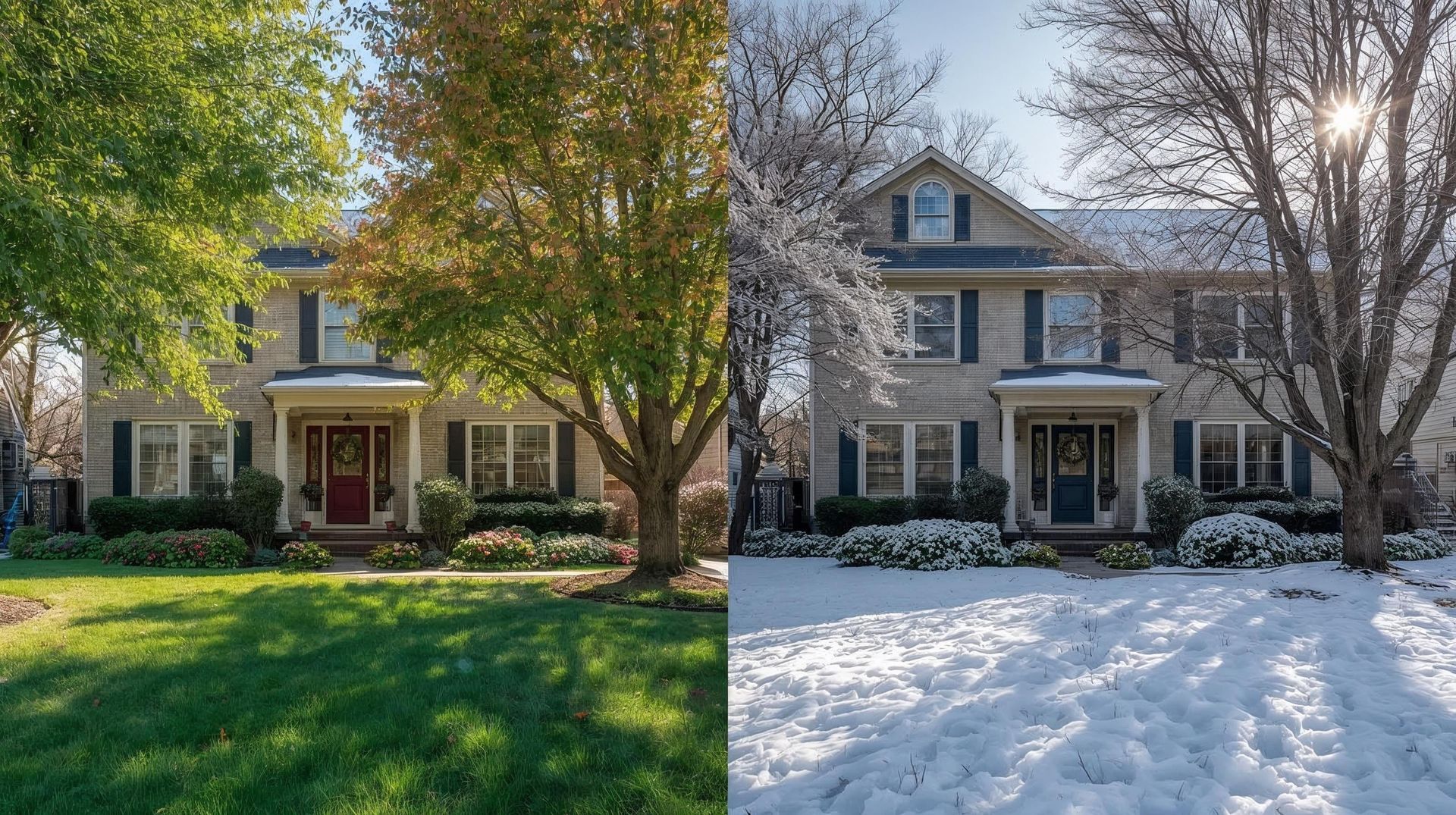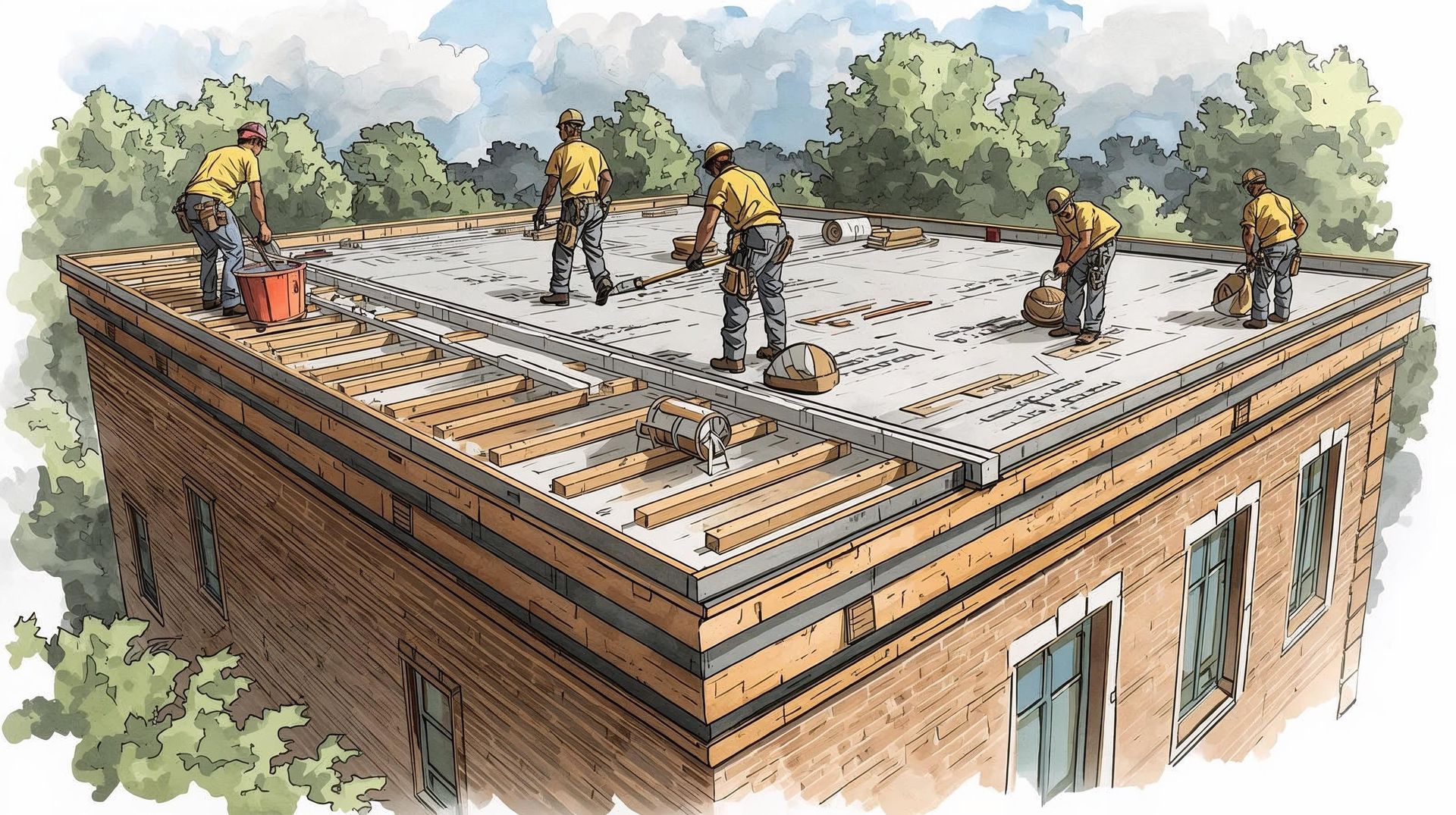How Roof Type Affects Replacement Cost: Gable, Hip, Flat & More
Key Takeaways
In a hurry? Here's the bottom line on how your roof's shape affects the cost:
- Simple is Cheaper. A simple Gable Roof (the classic triangle shape) is the most affordable roof type to replace.
- Complexity Costs More. A Hip Roof (with four sloped sides) or any roof with multiple angles, valleys, and dormers will cost significantly more.
- Why the Extra Cost? Complex roofs require more skilled labor, more materials (due to a 10-15% waste factor), and more safety precautions.
- Pitch Matters. Steeper roofs (a high roof pitch) increase labor costs because they are harder and more dangerous to work on.
- Flat Roofs are Different. Flat roofs use entirely different roofing materials (membranes, not shingles) and have their own unique cost structure.
Curious how your roof's shape and size factor into the price?
>> Get an Instant, Personalized Estimate with Our Free Roof Cost Calculator <<
Roof Replacement Cost by Roof Type: Gable, Hip, Flat & More Explained
When you start to budget for a roof replacement, you probably think about roofing materials first. But the shape and roof complexity of your roof can have just as big an impact on your final roof cost. A professional roofing contractor doesn't just see a roof. They see a series of surfaces, angles, and challenges.
A simple, rectangular roof is fast and cheap to install. A complex roof with multiple angles requires more labor, more materials, and more skill, which all drive up the total cost.
Let's break down the most common roof types so you can see how your home's design affects your quotation.
Why does Shape Change the Price?
Before we compare the roof types, here are the three main reasons why a complex roof costs more than a simple one, even if the home's ground-level square footage is the same.
More Surface Area & Material Waste
When it comes to materials, you're paying for more than just your home's square footage. A steep roof or a hip roof has a much larger surface area, which means you need to buy more materials.
Plus, a complex roof with lots of angles creates a ton of waste from cutting shingles. Roofing contractors will add 10% to 15% to the material costs to cover these cut-offs, which is a standard part of your replacement cost.
More Skilled Labor & Time
Labor costs are a huge part of your roof cost, often 40% to 60% of the total bill. A simple, straight roof is fast for a crew to work on. But a complex roof with lots of angles, valleys, and dormers is a different story. Every corner and seam requires the crew to stop, make custom cuts, and carefully install flashing, which takes a lot more time and skilled labor.
Roof Pitch (Steepness)
The steepness of your roof, known as its roof pitch, is another huge factor. A low-slope roof is "walkable," so it's cheaper. Steeper roofs are more dangerous to work on. The crew needs to use safety harnesses and special equipment, which slows down the entire roofing installation process and drives up your labor cost.
Cost Comparison of Common Roof Types
This is the main event. Here’s how the most common roof designs directly affect the cost of your roof replacement.
1. The Gable Roof (The Classic "A-Frame")
- What It Is: This is the simple "A" frame or triangle shape that most homeowners recognize. It has two sloped sides that meet at a single ridge at the top, with flat, vertical ends called gables.
- How It Affects Your Quote: This is the baseline for roofing costs. Your roof replacement cost will be at its lowest with a gable roof.
- Why? It's the easiest and fastest roofing installation. Crews can work quickly in straight lines. It has the least amount of material waste from cutting, and the labor costs are minimal compared to other factors.
- Who Is It Best For? This is the best roof type for budget-conscious homeowners or anyone who prefers a classic, simple look.
2. The Hip Roof (The Four-Sided Roof)
- What It Is: A hip roof has four sloped sides (instead of two) that all meet at a central point or a small ridge. It has no flat, vertical ends (gables).
- How It Affects Your Quote: This is where roof replacement costs start to climb. You can expect a quotation for a hip roof to be 15% to 20% higher than a gable roof on a house with the same square footage.
- Why? A hip roof has more surface area, so it requires more materials. More importantly, all four of those "hip" ridges require complex, angled cuts for the shingles and flashing, which takes more labor and skill from experienced roofers.
- Who Is It Best For? This roof is extremely stable and performs very well in high-wind and hurricane-prone areas. It's also chosen for its specific aesthetic, which many feel looks more upscale than a simple gable.
3. The Flat Roof (Common on Modern Homes & Additions)
- What It Is: A roof with very little or no roof slope (pitch). You'll often see this roof type on modern homes, garages, or home additions.
- How It Affects Your Quote: This is a completely different kind of roofing project. Your estimate won't list asphalt shingles because they can't be used here.
- Why? Shingles need gravity to let water run off. On a flat roof, water can pool, which would cause massive leaks. Instead, your cost will be based on specialized flat roofing materials like TPO or EPDM rubber that are rolled out and sealed to be completely waterproof. This roofing installation also requires a roofing contractor who has experience with flat roofs.
- Who Is It Best For? This roof is the right choice for modern home designs or for parts of your house, like an addition, that were built to have a flat roof.
How the 3 Main Roof Types Compare
To make comparing them even easier, here’s a quick table. It breaks down the main cost differences and which roof type works best for certain needs.
| Roof Type | Average Cost Factor | Main Roofing Material | Best For... |
|---|---|---|---|
| Gable Roof | Baseline (Most Affordable) | Asphalt Shingles, Metal Roofs | Budget-conscious homeowners, speed. |
| Hip Roof | Higher (15-20% More) | Asphalt Shingles, Metal Roofs, Tile Roofing | High-wind areas, specific aesthetics. |
| Flat Roof | Varies (Specialized) | TPO, EPDM, PVC Membranes | Modern homes, additions, low-slope areas |
Other Factors That Add Complexity and Cost
Beyond these three basic shapes, other features dramatically increase your roof replacement cost. Roof complexity is a huge driver of price.
Dormers and Valleys:
Every time your roof has an angle where two sections meet (a valley) or a window structure (a dormer), it creates a complex area. Each one requires a high degree of skilled labor and custom flashing to prevent leaks, adding significantly to the labor cost.
A Steep Roof Pitch:
As mentioned, a roof's pitch is its steepness. A "walkable" roof is cheaper. Steeper roofs are more dangerous and require roofing contractors to use extra safety equipment and work more slowly, which always increases labor costs.
Roof Penetrations (Chimneys & Skylights):
Items like chimneys, skylights, and plumbing vents are all roof penetrations. A roof with skylights requires additional labor and materials compared to a simple roof. Each one must be properly sealed with roof flashing, adding time and material costs to the roofing project.
Don't Forget These Universal Cost Factors
Finally, no matter what shape your roof is, these three factors will always influence your quote.
Geographic Location & Climate:
Labor costs are a primary driver of cost. Higher costs are found in urban areas with a high cost of living compared to rural areas. Your local climate also dictates material choices (e.g., wind-resistant materials in hurricane zones) and installation methods, which can affect the cost.
Building Codes & Permits:
Local building codes (like those in California or Florida) may mandate specific roofing materials or installations. Building permits are required and typically cost between $75 and $500, depending on your municipality.
Condition of the Existing Roof:
The replacement cost assumes your roof decking (the wood sheathing) is in good shape. Roofing contractors can only do an initial inspection from the outside. If a thorough inspection after tearing off the old roof reveals rotted or damaged wood, structural repairs will be a necessary additional expense.
Financing & Insurance Coverage
A new roof is a big expense, but there are ways to manage it.
Financing Options:
Most professional roofing contractors and roofing companies offer financing solutions or payment plans to help break the cost into manageable payments. You can also look into home equity loans or other financing options from your bank.
Insurance Coverage:
Homeowners' insurance will often cover a roof replacement if the damage is from a storm, but not from old age. Always review your policy and file insurance claims if your current roof was damaged by a specific event.
Conclusion: A Complex Roof is a Costlier Roof Replacement
As you can see, the cost of your roof is much more than just square footage. The architectural style of your roof is a major factor in the final replacement cost.
A simple gable roof will always be the most affordable option because its roofing installation is straightforward, requiring less time, less skilled labor, and resulting in less material waste.
A roof with roof complexity like steep pitches, hips, dormers, and valleys is a more difficult and time consuming roofing project, which will always be reflected in a higher roof cost on your estimate.
You have the knowledge, now get your personalized numbers.
>> Calculate Your Personalized Roof Replacement Cost for Free <<
How much more does a complex hip roof cost than a simple gable roof?
A hip roof can cost 15% to 20% more than a gable roof on a home with the exact same square footage. This is because it has more surface area (requiring more materials) and the angled "hips" require more time and skilled labor for cutting and installation.
Why do labor costs make up so much of the total roof cost?
Labor costs typically account for 40% to 60% of your total cost. This covers not just the crew's wages, but also their insurance (liability insurance and workers' compensation), safety equipment, roof removal labor, and the specialized skill required for a proper installation.
How do dormers and skylights affect the cost?
Dormers and skylights are roof penetrations that add roof complexity. Each one requires a roofing contractor to stop their work, precisely cut materials, and install intricate roof flashing to ensure a watertight seal. This extra time and skilled labor increase the overall cost of the job.
How do I get an accurate estimate for my specific roof type?
The best way is to get at least 3-5 detailed, written estimates from reputable roofing contractors. You can also get a great baseline estimate before you call them by using an online roof replacement cost calculator, which allows you to input your roof size and other known factors.
